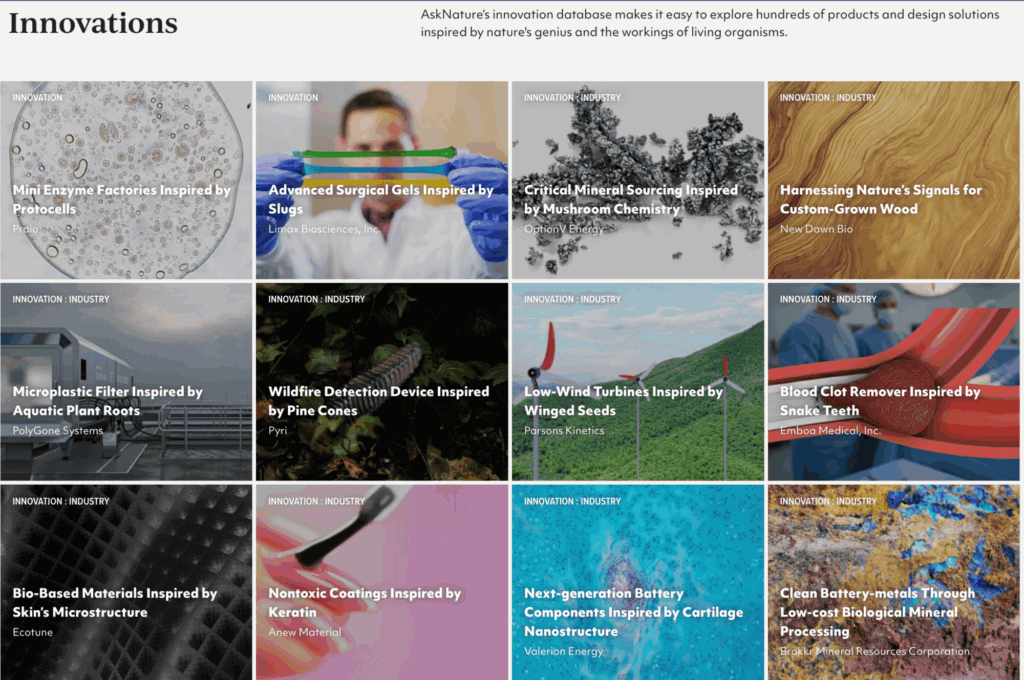This year’s London Climate Action Week (LCAW) felt both urgent and quietly hopeful. With over 700 events across the city, the energy was palpable, driven by a shared recognition that we are living through a pivotal moment for people and the planet. I was honored to represent the Biomimicry Institute, joining friends, partners, and new faces in conversations that were as honest as they were inspiring. I had the privilege of both co-organizing and attending some thought-provoking gatherings, including the launch of the Living Systems Alliance and presenting Nature of Fashion at the Future Fabrics Expo. Here’s a look inside the events, conversations, and collaborations that deepened my sense of possibility for the work to come.
Launching the Living Systems Alliance: Weaving Wisdom for Regeneration
On June 23rd, we formally launched the Living Systems Alliance with our partners to actively shape a new way forward. Alongside partners from the Permaculture Association, Transition Network, Kincentric Leadership, and the Global Ecovillage Network, we set out to answer a vital question: What becomes possible when we unite the success and wisdom of biomimicry, permaculture, eco-village design, and kincentric leadership in service of community resilience?
This alliance is rooted in the belief that nature’s principles, tested and refined over billions of years, hold the keys to regenerating our communities and our planet. Our launch event was a living tapestry of perspectives, with practitioners, designers, and community leaders exchanging stories and strategies. Amanda Sturgeon of the Biomimicry Institute captured the spirit of the evening: “We’re here to spotlight our interconnections, share what we’ve learned, and discover new pathways for living systems together.”
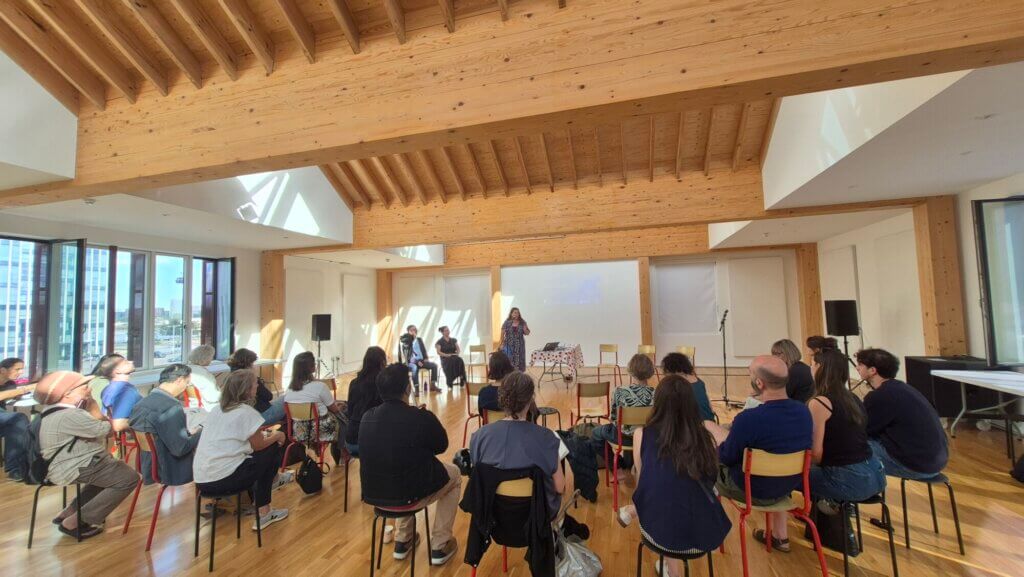
With this alliance, the goal is to nurture a living, evolving body of knowledge that is open-source and accessible to all. Crucially, it is guided by humility and a recognition that much of the wisdom we seek already exists in indigenous and local traditions. Throughout the evening, there was an honest reckoning with the need to decolonize our approaches, listen deeply, and honor the knowledge that has long sustained communities across the globe. We are committed to ensuring that this work is reciprocal, a true partnership with the people and places we hope to serve. The Living Systems Alliance is an open invitation: to learn, to collaborate, and to imagine what’s possible when we let nature lead the way.
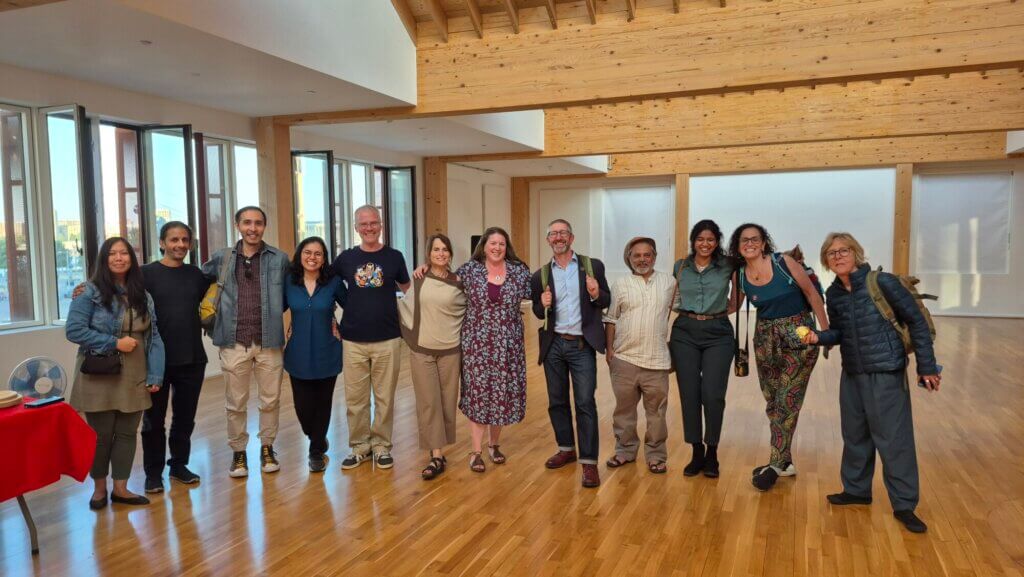
Future Fabrics Expo: Nature-Inspired Innovation in Action
The Future Fabrics Expo (June 24–25) was a reminder that innovation can be both beautiful and practical. Biomimicry and nature-inspired solutions could be found across the expo. Walking through the expo, I was struck by the sheer diversity of innovative approaches on display, some rooted in nature-inspired design, others pushing boundaries in circularity, materials science, and responsible production.
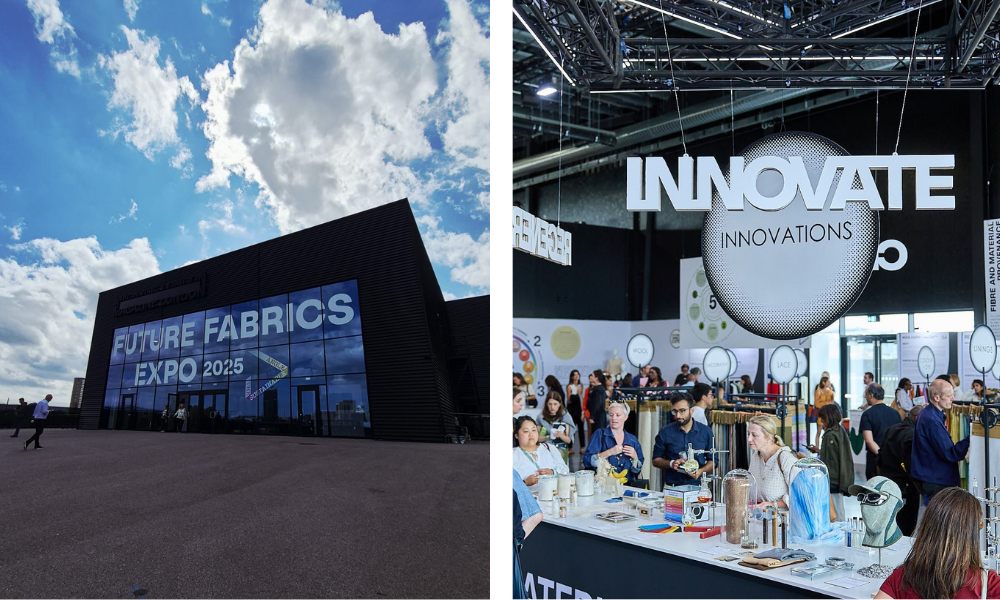
Among the many innovators, a few stood out to me for their nature-inspired thinking and creative courage. Amphico and Sparxell, both alumni of the Biomimicry Institute’s Ray of Hope Accelerator program, showcased solutions that draw directly from nature’s playbook. I was especially delighted to connect with Sparxell team members Benjamin Droguet, Erin O’Connor, and Simon Kew, who are pioneering a new generation of plant-based, biodegradable pigments. Their pigments, featured in collaboration with designer Patrick McDowell, offered a glimpse of a future where colour is both beautiful and gentle on the planet. As they put it, “The future of colour is plant-based, and we’re just getting started.”
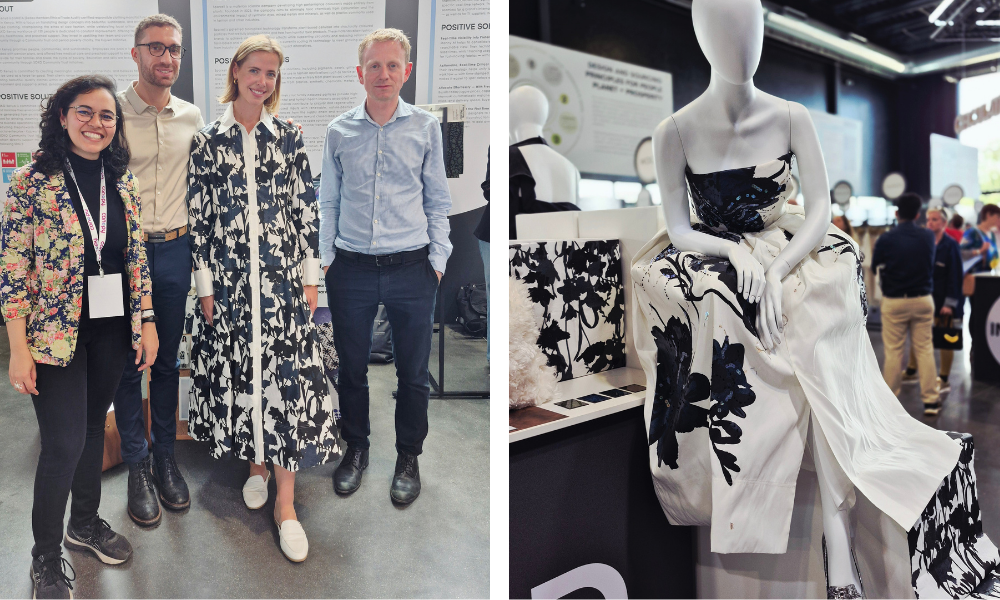
I was also inspired by the work of Sages, Post Carbon Lab, Simplifyber, Rootfull, Solena Materials, Bioculus by Reo-Eco, Growink, VORN and countless others, each bringing their own unique vision to the challenge of transforming fashion’s footprint. The Biomimicry Institute’s Nature of Fashion initiative was also featured at the RE-SOLVE Lab, curated by the wonderful Kristen Nuttall, exploring how nature’s decomposition processes can inspire new approaches to managing textile waste. The scale of the challenge is sobering: the global fibre market has more than doubled since 2000, with less than 1% of fibres currently recycled. Still, FFE left me with a sense of cautious optimism. Momentum is building, solutions are taking root, and the industry is beginning to embrace solutions that work with nature, not against it.
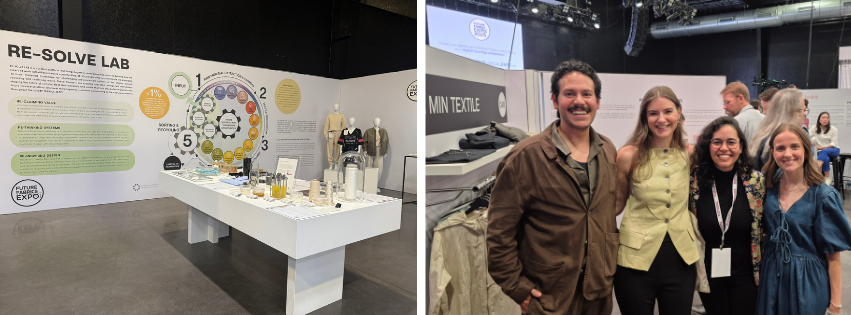
Panel Insights: Scaling Circularity and Systemic Change
The “RE:SOLVE – Waste Stream Opportunities for Creative Circular System Innovation” panel was a thoughtful exploration of both the promise and the complexity of circularity within the textile industry. Panelists included Shay Sethi (Ambercycle), Shahriare Mahmood (SPINNOVA®), Amanda Sturgeon (The Biomimicry Institute), Clara von Luckner (Systemiq), and Kenji Higashi (Spiber Inc.), who spoke candidly about the realities of scaling new materials and systems.
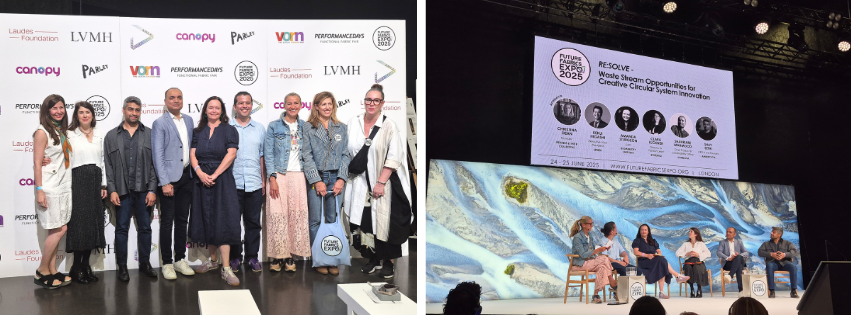
A key insight was the complexity behind what, on the surface, can seem like “simple” circular solutions. While the vision of turning old garments into new ones is inspiring, the reality involves intricate logistics, advanced chemistry, and the need for deep collaboration across the entire supply chain. The panel underscored that no single company or technology can solve these challenges alone; partnerships and knowledge-sharing are essential.
Policy frameworks, particularly Extended Producer Responsibility (EPR) and recycled content mandates, were highlighted as critical levers. Clara von Luckner shared findings from Systemiq’s recent report, noting that producing recycled polyester can cost up to 2.6 times more than virgin polyester, a gap that policy support is essential to bridge. Without strong policy, the business case for textile-to-textile recycling simply doesn’t add up, despite the growing urgency and innovation in the sector.
Amanda Sturgeon reminded us that even with the best recycling innovations, there will always be a fraction of waste that remains. For this, policy and regulation must drive solutions, and design thinking needs to start at the very beginning, creating products for durability and decomposition, not just recyclability
The panelists’ experiences working with major brands across multiple regions revealed a sector in motion: regulatory planning and impending rulings are motivating brands to invest in circular solutions, but aligning supply chains and securing the necessary commitments remains a challenge. There was a shared sense of cautious optimism: momentum is building, and ambition is high, but the journey to a truly circular textile industry will require time, investment, and sustained collaboration.
As the session closed, one message resonated clearly: while the path forward is complex, the willingness to work together, and to learn from nature’s own cycles, offers real hope for a more regenerative future.
Fashioning the Future: Accelerating Towards a Sustainable Fashion Industry
Another highlight of the week was attending “Fashioning the Future: Accelerating towards a Sustainable Fashion Industry” at Goals House, hosted by the NewClimate Institute. This panel brought together voices from the British Fashion Council, Textile Exchange, NewClimate Institute and the Textown Group in Bangladesh, offering a balanced look at the sector’s climate progress. Panelists shared that while leading brands are setting more ambitious greenhouse gas reduction targets and making strides in responsible material sourcing, the path to true sustainability remains complex. Efforts to procure renewable electricity are growing, but electrification of supply chains and deep circularity are still in their early days.
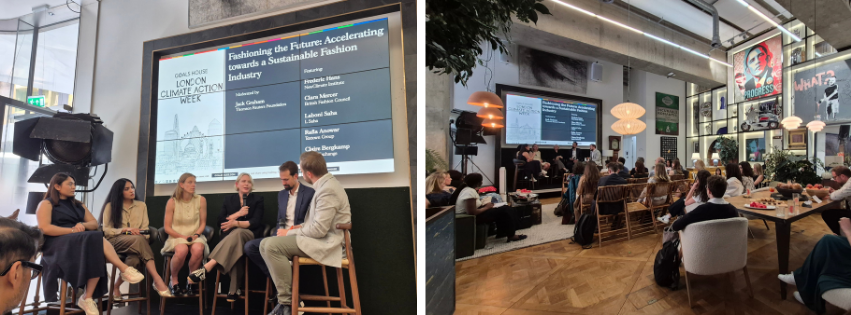
A recurring theme was the need for collaboration across the value chain, from small and medium-sized enterprises to major global brands, as well as the importance of policy, transparency, and fair value for all stakeholders, especially those in the Global South. The panelists also highlighted the vital role of government in setting clear regulations and incentives, while acknowledging that industry action cannot wait for policy alone.
The discussion was refreshingly honest about the challenges that remain, particularly the need to move away from fast, disposable fashion and to ensure fair value for all, especially those in the Global South. As one panelist put it, “We have to bring value back into everything we do, and move away from treating fashion as disposable.”
Bridging Climate Action and Colonial Histories
At the Natural History Museum, Rachel Luk and Camila Tham organized “Untold Stories of Climate and Empire,” a session that wove together the threads of climate, colonial histories, and justice. Led by climate justice activist Larissa Moraes, the conversation reminded us that climate solutions must be rooted in history, equity, and a willingness to listen to stories that are often left out. It was moving to see so many people engaged in such a complex but vital topic.
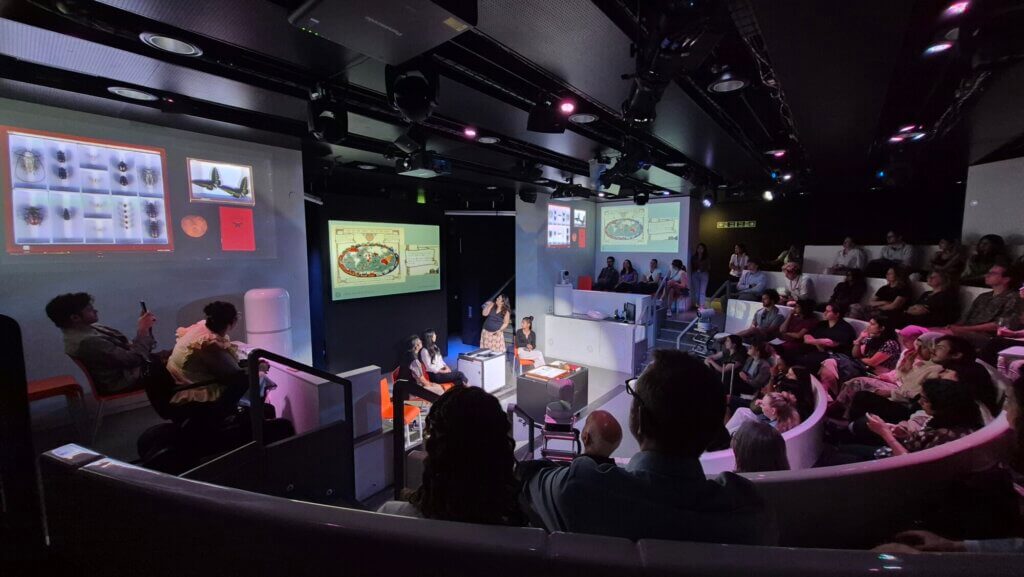
Broader LCAW Takeaways: A Movement Gaining Momentum
Throughout the week, I was reminded that real change happens in communities. At the Living Systems Alliance launch, we invited participants to work with Life’s Principles leadership cards, sparking honest conversations about care, abundance, and interconnectedness. One phrase that stayed with me came from a participant from southern Mexico: “How is your heart?” It’s a question that grounds us in empathy and reminds us why we do this work.
Across social media and in conversations, I heard a growing consensus: valuing nature, embedding it in business and finance, and learning from indigenous knowledge are not just aspirations, they are necessities. There is a moral awakening happening, and while the challenges are real, so too is our capacity for collaboration and hope.
As Nicole Miller of Biomimicry 3.8 stated, “If we integrate nature’s principles into our design process, into our thinking, then we’re inherently designing in a way that’s regenerative… creating conditions conducive to life.” There is hope in this clarity, and in the collective will to act.
What’s Next: Continuing the Journey
The Living Systems Alliance is just getting started, a journey of co-creation, experimentation, and shared learning. The need to scale next-generation materials, circular systems, and nature-centric governance is urgent. But so too is the need to center justice, inclusion, and indigenous wisdom.
As we move forward, I invite you to stay connected, follow our journey, and most importantly, continue these conversations in your own communities. Hope, after all, is not naïve. It is a choice, and a practice. Together, we can plant seeds that will grow for generations.
If you’d like to learn more or get involved with the Living Systems Alliance, please stay tuned for updates as we officially launch in October 2025.
Asha Singhal is the Nature of Fashion Communications Manager at the Biomimicry Institute. She is a biomimicry practitioner, architect, designer, and researcher dedicated to crafting regenerative environments. Learn more about Asha and the rest of the team here.



